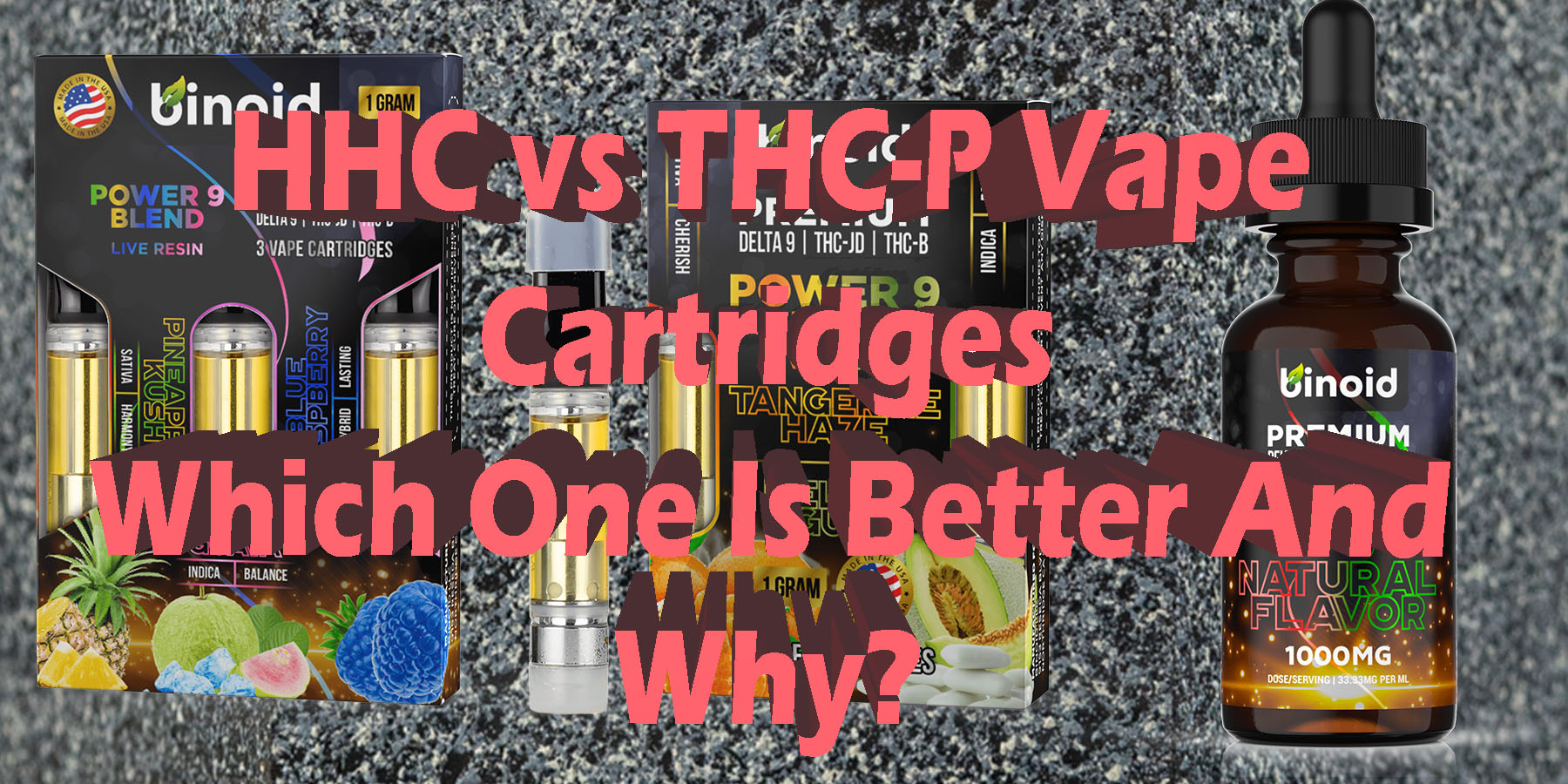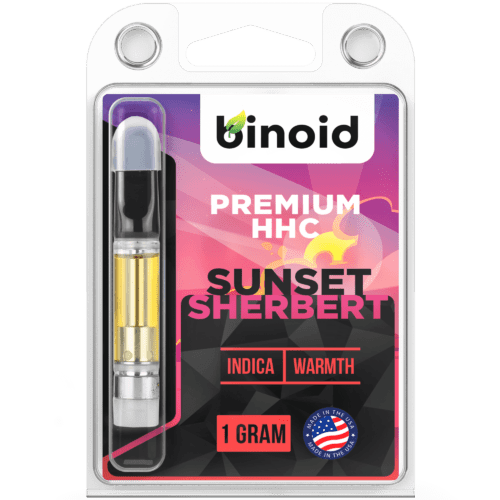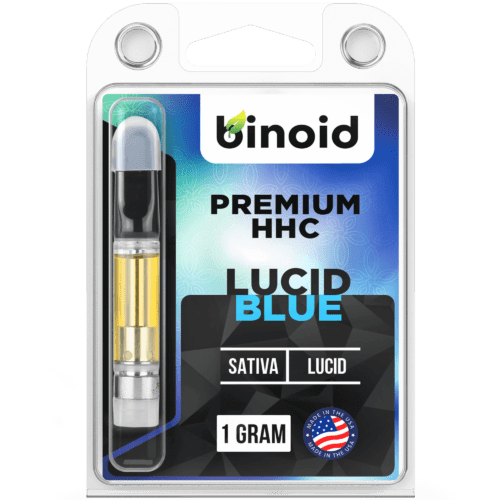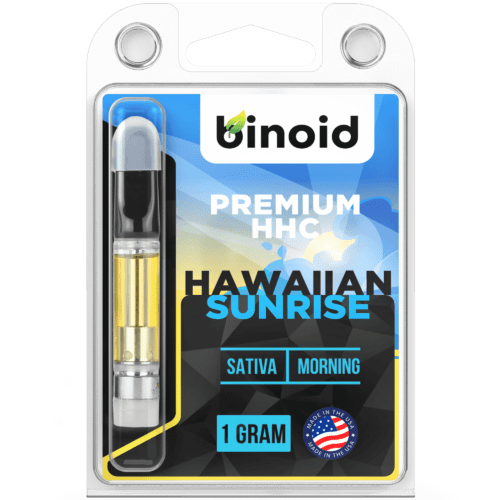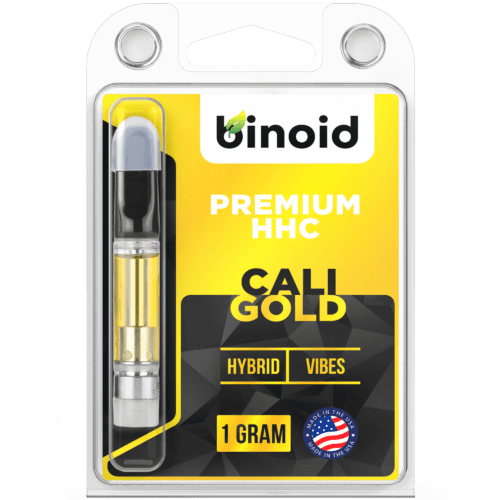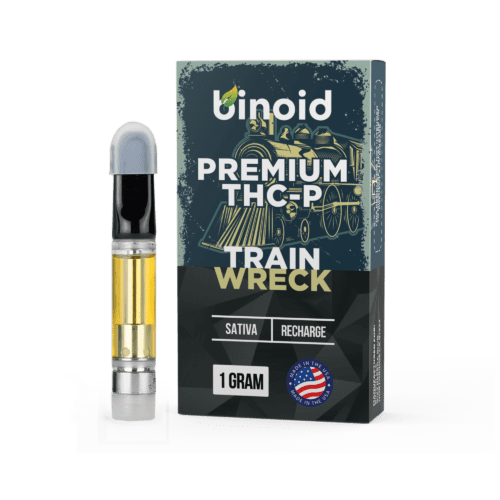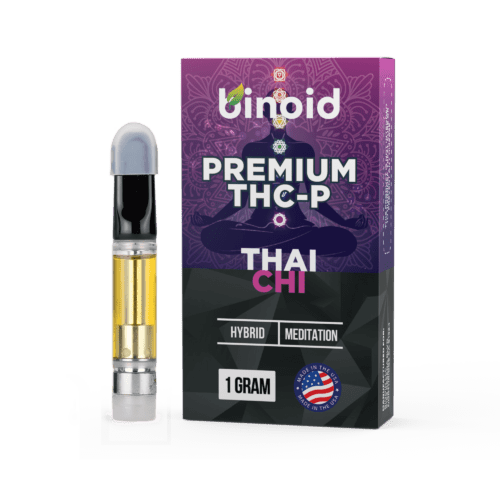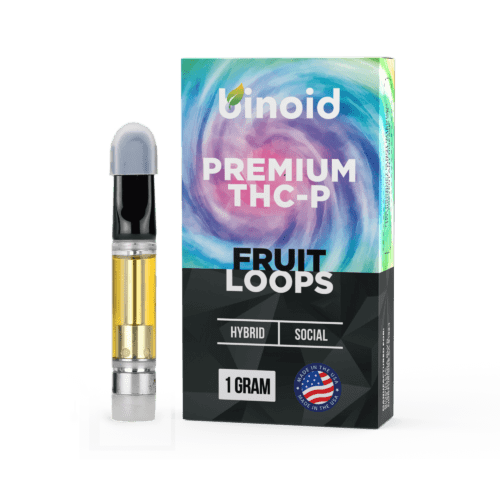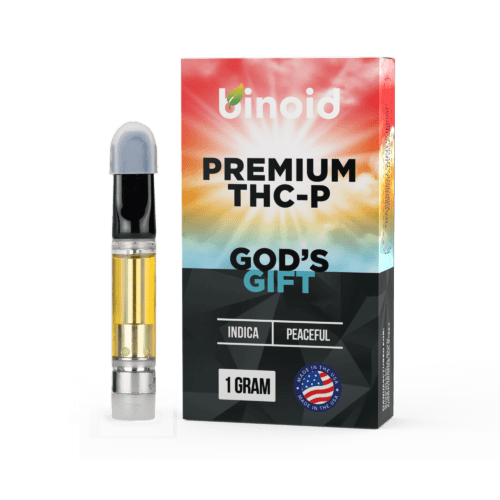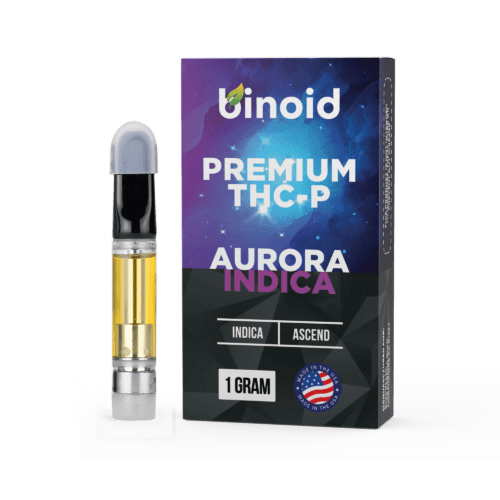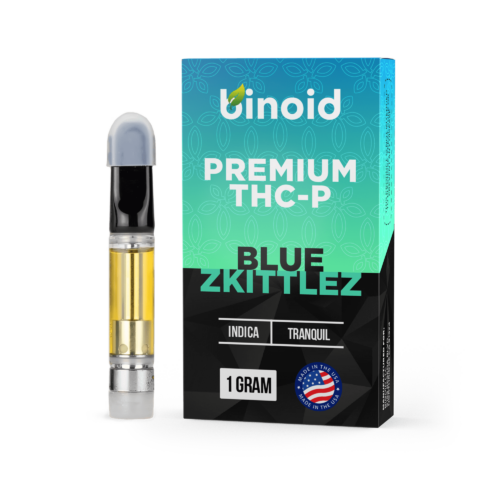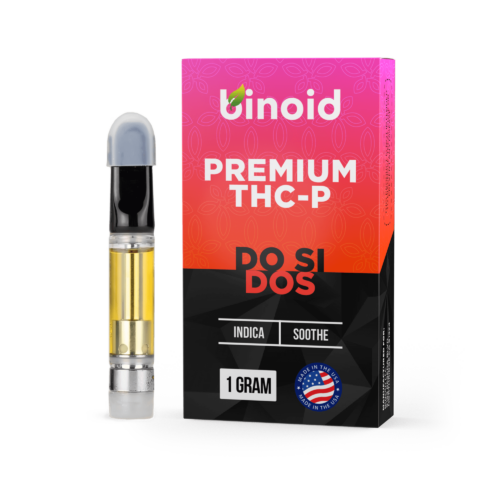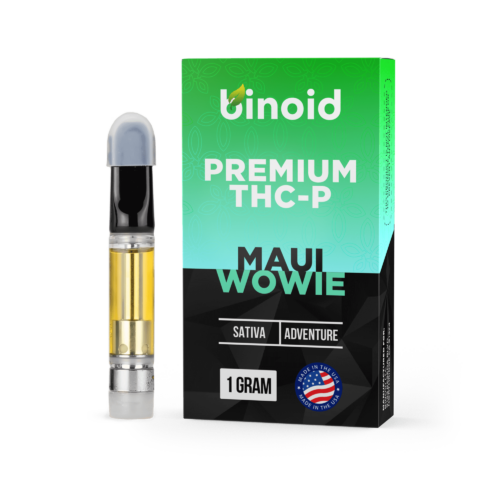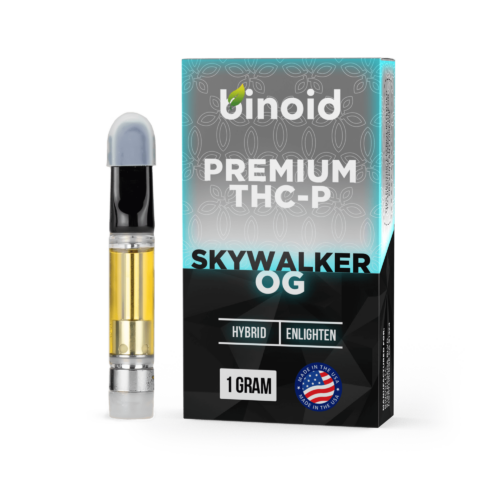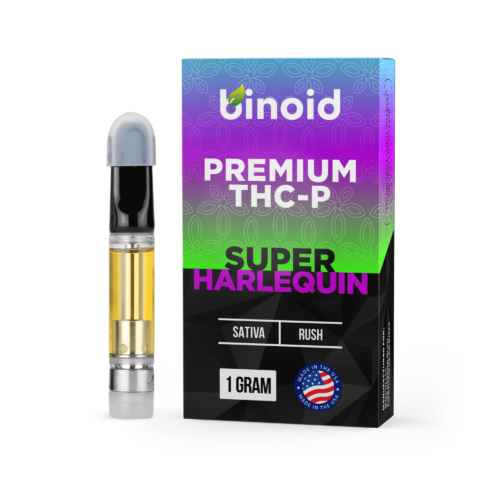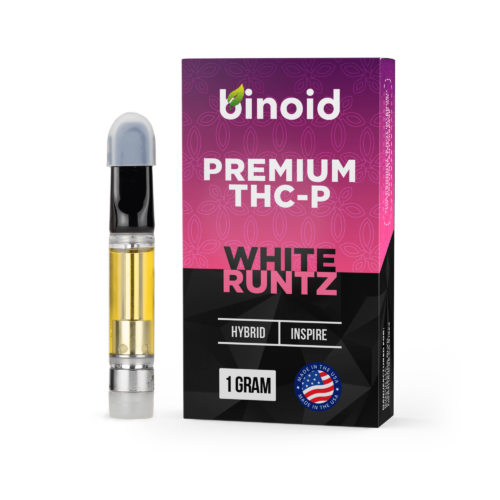In the world of high-performance engineering, a fascinating choice often arises between a machine that is a masterfully refined version of a classic design, and one that is an entirely new and experimental engine built for overwhelming power. A similar choice now confronts the modern cannabinoid enthusiast, who must weigh the authentic, potent experience of one molecule against the staggering, almost surreal intensity of another.
This dynamic is at the forefront of the current market, brought into sharp focus by the efficient delivery of vape cartridges. We are, of course, talking about the compelling HHC vape cartridges vs. THC-P vape cartridges matchup, a contest of two vastly different philosophies of potency. The decision pits the raw, natural potential of the cannabis plant, unlocked by heat, against a molecular powerhouse engineered to push the very limits of psychoactivity. Do you reach for the familiar, powerful embrace of the classic ‘high’, or the thrilling, uncharted territory of a new titan of bliss?
To Buy Cannabinoid Vape Cartridges Click Here
Recommended products
What are Cannabinoids?
To truly appreciate the profound differences in the HHC and THC-P matchup, one must first possess a firm understanding of the fundamental building blocks of their composition: cannabinoids. In the broadest scientific sense, cannabinoids represent a diverse class of chemical compounds that are defined by their ability to interact with and influence the body’s endocannabinoid system. These compounds are the primary active ingredients responsible for the effects associated with the cannabis plant, but their origins are not confined to botanical sources alone.
The scientific community generally categorizes these molecules into three distinct groups: phytocannabinoids, which are synthesized by plants (most famously, the Cannabis sativa plant); endocannabinoids, which are produced naturally within the bodies of humans and other vertebrate animals; and synthetic cannabinoids, which are created artificially in a laboratory setting. Phytocannabinoids, like the HHC and THC-P we are exploring today, have a molecular structure that allows them to interface with our bodies’ internal systems, orchestrating a complex symphony of physiological responses.
The discovery and subsequent understanding of this intricate relationship are rooted in the endocannabinoid system (ECS), a crucial and sophisticated cell-signaling network. The ECS plays a vital role in regulating a vast array of functions to maintain a state of internal physiological balance, a concept known as homeostasis. This system is composed of three core components: endocannabinoids (such as anandamide, often called the “bliss molecule,” and 2-arachidonoylglycerol, or 2-AG), which are the body’s own naturally produced cannabinoid molecules; receptors that these compounds bind to (primarily CB1 receptors, found mostly in the brain and central nervous system, and CB2 receptors, located predominantly in the peripheral nervous system and immune cells); and enzymes that metabolize and break down the endocannabinoids once they have served their signaling purpose.
Phytocannabinoids are able to produce their effects because their molecular shapes allow them to mimic or otherwise influence our natural endocannabinoids, binding to these same receptors and thus modulating cellular activity.
Within the vast family of over one hundred identified phytocannabinoids, there is a clear and important distinction between major and minor compounds, as well as a distinction between their active and acidic forms. Major cannabinoids, such as cannabidiol (CBD) and the well-known Delta 9 THC, are the most abundant active compounds and have been the subject of extensive scientific research and public discussion for many decades. In contrast, minor cannabinoids exist in much smaller, often trace, amounts. HHC and THC-P both fall squarely into this category.
Furthermore, most cannabinoids exist in the raw cannabis plant in an acidic form, such as THCA and CBDA. These are known as cannabinoid acids and are the biosynthetic precursors to the active compounds we are more familiar with. THCA, for example, is a major cannabinoid in its raw form, often the most abundant compound in uncured hemp flower.
This fundamental distinction between different types of cannabinoids is absolutely essential to understanding the landscape of the modern hemp industry. The 2018 Farm Bill, a landmark piece of federal legislation, federally legalized hemp and all hemp-derived products, provided they contain no more than 0.3% Delta 9 THC by dry weight. This legal framework, while sharply focused on restricting the specific molecule of Delta 9 THC, inadvertently created a massive opportunity for the scientific exploration and commercialization of other cannabinoids that could be legally sourced from compliant hemp.
This legal pathway, combined with significant advancements in agricultural breeding, chemical conversion, and purification techniques, has directly enabled the rise of products centered around compounds like the hydrogenated cannabinoid HHC and the powerful homolog THC-P, empowering consumers with a sophisticated palette of experiences.
Recommended products
What are Cannabinoid-Infused Vape Cartridges and How are They Typically Created?
Cannabinoid-infused vape cartridges, often simply called “vape carts,” are small, pre-filled containers that hold a liquid formulation of purified cannabinoid distillate and, typically, aromatic terpenes. These self-contained units are meticulously engineered to attach to a compatible battery, commonly known as a vape pen or 510-thread battery, which provides the necessary electrical power to heat the liquid and instantaneously transform it into an inhalable vapor. The primary function of a vape cartridge is to offer a convenient, discreet, and highly efficient method for consuming cannabinoids.
Unlike other consumption methods that require more preparation or have a significantly delayed onset, such as edibles, vaping allows for the rapid delivery of the active compounds directly into the bloodstream through the vast surface area of the lungs. This results in effects that can be felt almost immediately, often within a matter of minutes, providing users with unparalleled control over their experience as they can take small draws and precisely gauge the effects before deciding to continue.
The marketplace for cannabinoid vape cartridges is incredibly diverse, with products available in a multitude of shapes, sizes, and materials designed to suit various consumer preferences and accommodate ongoing technological advancements. The most ubiquitous size is the 1-gram (or 1mL) cartridge, which offers a substantial amount of oil that serves as a happy medium for both regular and occasional users. However, smaller half-gram options remain popular for those wishing to sample a new strain, while larger 2-gram, 3-gram, and even 5-gram disposable vape pens have emerged for users seeking maximum convenience and longevity.
In terms of shape, the classic cylindrical design with a 510-thread connection remains the undisputed industry standard due to its near-universal compatibility with the vast majority of batteries. Yet, some brands have pioneered proprietary pod-style systems that often feature a sleeker, more modern aesthetic and a magnetic connection, although they require a specific, brand-locked device to function. The materials used in cartridge construction are also a key differentiator, profoundly impacting performance, safety, and the purity of the user experience, with a clear hierarchy from basic plastics to premium glass and ceramic constructions.
While external designs may vary, the core components of a standard vape cartridge are universal and work in precise concert to deliver a smooth, flavorful, and consistent experience. Each part plays a critical, non-negotiable role in the device’s function, from the point of contact with the user to the electrical connection with the power source. A detailed breakdown reveals the intricate design that ensures safety and proper function:
Mouthpiece: This is the uppermost part of the cartridge through which the user inhales the vapor. Mouthpieces are crafted from a variety of materials, including common options like plastic, more premium choices like heat-resistant ceramic, and stylish alternatives like metal or wood. The shape can also differ—flat, rounded, or ergonomically contoured (“duckbill”)—to enhance comfort. The material choice is not merely aesthetic; ceramic mouthpieces, for instance, are excellent at dissipating heat, ensuring a cooler and more comfortable draw.
Tank/Reservoir (Chamber): The tank is the main body of the cartridge that holds the precious cannabinoid-infused oil. It must be transparent to allow the user to monitor the remaining liquid. While some budget cartridges may use polycarbonate plastic, high-quality tanks are almost exclusively made from borosilicate glass. This type of glass is highly durable and, most importantly, non-reactive, ensuring that there is no chemical leaching into the oil, which could alter the flavor and compromise the purity of the terpenes and cannabinoids.
Atomizer/Heating Element: The atomizer is the functional heart of the cartridge, responsible for heating the oil to its precise vaporization point (typically between 300-400°F). It consists of a heating coil wrapped around or embedded within a wicking material that draws in the oil. In modern, high-end cartridges, the atomizer core is made of a porous ceramic. This technology, often referred to by brand names like CCELL, provides exceptionally even heat distribution and a larger surface area, which prevents direct contact between the hot coil and the oil. This indirect heating is crucial for preventing burning, which would create a harsh taste and potentially harmful byproducts, and for preserving the delicate and complex flavor profile of the terpenes.
Base/Connector: The base is the bottom part of the cartridge that houses the atomizer and features the threading used to connect the device to a battery. The most common type is the 510-thread (referring to the 10 threads at 0.5 mm per thread), which has become the universal standard, ensuring interoperability between most cartridges and batteries on the market. The base also contains the airflow intakes—small holes that allow air to enter and mix with the vapor—and the electrical connection point that draws power from the battery to activate the heating element when the user inhales or presses a button.
The production of a cannabinoid-infused vape cartridge is a meticulous, multi-stage process that merges precision manufacturing with sophisticated chemical science to ensure a safe, effective, and enjoyable final product. This complex journey can be broken down into three distinct parts: the fabrication of the physical hardware, the formulation of the specialized oil, and the final assembly and rigorous quality control.
Part 1: How the Cartridge Itself is Made and Constructed
The manufacturing of the empty cartridge begins with the high-precision fabrication of its individual components in specialized facilities. The borosilicate glass for the tank is molded and cut to exact specifications. The ceramic for the atomizer core is created from refined mineral powders, which are then fired at extremely high temperatures and shaped, after which the metallic heating coil is carefully integrated. The mouthpiece and base are also manufactured, often through injection molding for plastics or CNC (Computer Numerical Control) machining for metals. These separate parts are then assembled in a sterile, dust-free clean-room environment (often adhering to ISO standards) to prevent any contamination. Throughout this process, stringent quality control is paramount, with manufacturers conducting tests for air-tightness to prevent leaks, ensuring proper airflow resistance for a good draw, and verifying that the electrical connections are sound and the 510-threading is perfectly machined.
Part 2: How the Cannabinoid-Infused Vape Oil is Made
This highly scientific stage starts with legally compliant, high-quality hemp biomass. The cannabinoids are first extracted from the plant material using various methods. For stable distillates, supercritical CO2 or ethanol extraction is common. For more volatile, full-spectrum extracts rich in acidic cannabinoids, cold extraction methods using solvents like butane or propane are often used to create “live resin.” After extraction, the oil is refined. For minor cannabinoids, this may involve complex isomerization to convert a precursor like CBD into the target molecule. For major cannabinoids, it may involve distillation to achieve high purity. Finally, this purified oil is formulated, often by reintroducing carefully selected terpene profiles to create the desired flavor, aroma, and strain-specific effects.
Part 3: Bringing It All Together
In the final stage, the precisely formulated cannabinoid and terpene mixture is gently heated to reduce its viscosity and is then carefully injected into the empty, assembled cartridges. This is typically done using automated filling machines in a sterile environment to ensure dosage consistency and prevent contamination. Once filled, the cartridges are securely capped or sealed to create an airtight container that prevents any leakage. The last and arguably most critical step is comprehensive third-party lab testing. A statistically significant sample from each batch is sent to an independent, ISO-accredited laboratory. There, it is tested for potency (to confirm cannabinoid percentages), purity (to ensure it is free from residual solvents, heavy metals, pesticides, and microbial contaminants), and legal compliance (to verify the Delta 9 THC level is at or below the 0.3% threshold). Only after passing these rigorous tests is the batch approved for packaging and release to the market.
Recommended products
Breaking Down Today’s Cannabinoid Vape Cartridges Matchup: HHC Vape Cartridges vs. THC-P Vape Cartridges
With a clear understanding of cannabinoid fundamentals and vape cartridge production, we can now examine the main event. This is a particularly fascinating matchup because it pits a synthesized hydrogenated compound against a synthesized homolog, highlighting the incredible intersection of chemistry, technology, and legality in the modern hemp industry. This is not a simple comparison of effects, but a deep dive into two fundamentally different types of products that, through different means, have become titans of the market. On one side stands HHC, a uniquely stable molecule that delivers a balanced and durable experience. On the other stands THC-P, a uniquely powerful molecule that delivers overwhelming and profound psychoactive power.
Contender #1: HHC Vape Cartridges
Making its entrance as a formidable and highly popular contender is HHC. HHC vape cartridges have carved out a significant space in the hemp-derived market, lauded by consumers for offering a unique and compelling alternative to traditional THC isomers. It is celebrated for its remarkable stability and for delivering an experience that many users find to be a perfect middle ground—potent and euphoric, yet often perceived as more relaxing and less prone to inducing feelings of unease than its THC cousins. This has made HHC a go-to choice for a wide range of users, from those seeking a reliable and enjoyable psychoactive experience without the legal complexities of Delta 9 THC, to seasoned enthusiasts who appreciate its smooth character and well-rounded effects.
Hexahydrocannabinol (HHC) is a semi-synthetic hydrogenated cannabinoid. This means it is not typically found in meaningful quantities in the cannabis plant but is instead created in a laboratory through a process called hydrogenation. This process, first discovered by the American chemist Roger Adams in the 1940s, involves taking a THC molecule (like Delta 8 or Delta 9 THC) and saturating it with hydrogen atoms in the presence of a metal catalyst like palladium. This reaction breaks the double bonds in the THC molecule’s carbon ring, replacing them with hydrogen atoms. T
he result is a new, more stable molecular structure. This stability is HHC’s defining feature, making it highly resistant to degradation from heat, light, and oxidation, which gives it a much longer shelf life than THC. The process also creates two different types of HHC molecules, known as epimers: 9R-HHC, which is psychoactive and binds effectively to cannabinoid receptors, and 9S-HHC, which is largely inactive. The ratio of these two epimers in a final HHC product is crucial, as it directly determines the overall potency of the experience.
Now, the market for HHC vape cartridges has matured rapidly, offering an impressive array of products designed to highlight its unique and enjoyable properties. Brands have developed a comprehensive range of options that allow consumers to experience HHC in various forms, from pure, unadulterated distillates to complex, synergistic blends, all aimed at delivering its signature effects in a smooth, flavorful, and enjoyable format. The customization options below are extensive, enabling users to select products that perfectly match their lifestyle, preferences, and desired mental state:
Shapes & Sizes: HHC cartridges predominantly conform to established industry standards, most frequently appearing in 1-gram cylindrical formats equipped with the universal 510-threading. However, as various brands strive to differentiate their offerings and cater to specific consumer habits, users can also discover smaller half-gram options ideal for lighter use or sampling, larger 2-gram or even 3-gram disposable vapes for ultimate convenience and prolonged enjoyment, and sleek, proprietary pod systems that are designed to pair with brand-specific batteries, often boasting unique features or form factors.
How They’re Constructed: Premium HHC cartridges are invariably constructed using high-quality, inert materials to guarantee optimal performance, user safety, and the preservation of flavor. This typically includes a non-reactive borosilicate glass tank to contain the viscous oil and an advanced ceramic core atomizer (such as CCELL technology) that ensures consistent, low-temperature heating. This superior construction is absolutely critical for preventing the oil from burning, which would create a harsh, acrid taste, and it ensures that the full spectrum of delicate terpenes is vaporized efficiently for a smooth, pure, and flavorful draw from the first puff to the last.
Potential Use of Live Resin or Live Rosin: To elevate the user experience far beyond that of a standard distillate cartridge, many top-tier HHC products incorporate live resin or live rosin. Live resin is a highly sought-after cannabis concentrate produced from fresh, flash-frozen cannabis plants, a method that preserves a much wider and more volatile array of terpenes and other aromatic compounds compared to traditional techniques that use dried and cured plant material. The addition of these full-spectrum extracts to HHC distillate results in a profoundly more robust, authentic flavor profile and a more nuanced, well-rounded experience often attributed to the “entourage effect”.
Strain-Infused: The perceived effects of an HHC cartridge are heavily shaped by its specific terpene profile, which is carefully formulated to replicate the characteristics of well-known cannabis strains. Sativa-dominant strains are infused with terpenes like limonene and pinene, which are known for their uplifting, citrusy, and piney aromas, making them an excellent choice for daytime activities. Indica-dominant strains typically feature terpenes such as myrcene and linalool, which are associated with relaxation and calming, earthy aromas, perfect for evening use or unwinding. Hybrid strains are formulated to offer a balanced blend of both, providing a versatile experience that can be suitable for nearly any time of day.
Sometimes Combined with Other Cannabinoids: The true artistry in the modern cannabinoid market lies in the creation of unique, synergistic blends designed for specific effects. HHC‘s stable and well-rounded profile makes it an excellent base for a wide range of combinations:
Mild Potency: For a gentler, more nuanced experience, HHC can be blended with cannabinoids like Delta 10 or THCV. This can create a Sativa-leaning effect that combines the uplifting energy of Delta 10 with the smooth euphoria of HHC, perfect for social situations or creative tasks.
Moderate Potency: HHC is often blended with Delta 8 THC to produce a deeply relaxing and balanced experience, combining the best of both worlds. It can also be paired with THCA to create a potent, classic high with the added stability and unique character of HHC.
Strong Potency: For the most experienced users seeking the maximum possible effect, HHC is expertly blended with other highly potent minor cannabinoids like THC-P, THC-H, or even its own derivatives like HHC-O and HHC-P. These blends are designed to deliver an overwhelmingly powerful and long-lasting experience that pushes the boundaries of intensity.
The overall effects of an HHC vape cartridge are characterized by a potent yet smooth euphoria that is often compared to a slightly milder version of Delta 9 THC. Its functional aspects are defined by this balance; it provides a significant psychoactive experience that is both cerebral and physically relaxing, but many users report that it is less likely to induce the feelings of unease or paranoia that can sometimes accompany high doses of THC. This baseline experience becomes much more textured when combined with other formulation factors.
A strain-infused Sativa disposable can make the effects feel more energetic and creative, while an Indica blend can produce a profoundly tranquilizing sensation perfect for deep relaxation. The inclusion of live resin elevates this further by providing a richer, more authentic taste and a more full-bodied, entourage-driven feeling. When blended with other cannabinoids, HHC can serve as a stable foundation for a wide array of targeted effects, from the gently uplifting to the overwhelmingly potent.
Recommended products
Pros & Cons
Like any product, HHC vape cartridges come with their own distinct set of advantages and potential drawbacks. A thorough understanding of these can help you determine if they are the right fit for your personal needs, tolerance, and expectations.
Pros:
Enhanced Stability: The hydrogenation process used to create HHC makes it a structurally more stable molecule than THC. It is highly resistant to degradation from heat, UV light, and oxidation. This means HHC vape cartridges have a significantly longer shelf life and are less likely to lose their potency over time, offering a more reliable and consistent product for the consumer.
Effects Similar to Delta 9 THC: For many users, the primary appeal of HHC is that its effects are remarkably similar to those of traditional Delta 9 THC. It provides a potent and enjoyable experience that includes euphoria, altered perception, and physical relaxation. This makes it an excellent legal alternative for those in areas where Delta 9 THC is not accessible.
Often More Relaxing High: A significant body of anecdotal evidence suggests that HHC provides a high that is more relaxing and less likely to induce feelings of unease or paranoia compared to Delta 9 THC. This makes it a preferred choice for individuals who are sensitive to the anxiety-provoking side effects of traditional THC, offering a smoother and more reliably pleasant journey.
Federally Legal (Hemp-Derived): Because HHC is typically created from hemp-derived CBD or other cannabinoids, it falls under the same legal framework as Delta 8 established by the 2018 Farm Bill. This makes it federally legal, allowing it to be purchased online and shipped to many states. This accessibility is a major advantage over state-regulated cannabis products.
Versatility in Blends: HHC’s well-rounded and stable nature makes it a fantastic base cannabinoid for creating complex blends. Its effects are potent but not typically overwhelming, providing a solid foundation upon which formulators can layer other minor and major cannabinoids. It can be used to create everything from mild, functional blends to extremely potent concoctions.
Great for Moderate Potency Users: HHC strikes a perfect balance of potency that appeals to a broad range of consumers. It is noticeably stronger than Delta 8, providing a more substantial experience, but is often considered slightly less intense than Delta 9 THC. This positions it perfectly for users who have graduated from milder cannabinoids and are seeking a more robust effect without venturing into overwhelming territory.
Novel Alternative to THC: For seasoned enthusiasts who are very familiar with the effects of various THC isomers, HHC offers a novel and unique experience. While similar, its character is distinct, providing a different “flavor” of high that can be a welcome change of pace. Exploring these nuances is a major part of the appeal for cannabinoid connoisseurs.
May Not Show on Standard THC Drug Tests: This is a highly debated and important point that comes with a major caveat. Because HHC is not a THC molecule, it is not metabolized into THC-COOH, the primary metabolite that standard drug tests look for. Some anecdotal evidence suggests users have passed drug tests after consuming HHC. However, this is not guaranteed, and some advanced drug tests may be able to detect it. No one subject to drug testing should rely on this as a certainty.
Cons:
Less Research than THC: While HHC has been known to science for a long time, it has only recently become a popular consumer product. As such, there is significantly less clinical research on its long-term effects, safety profile, and metabolic pathways compared to more common cannabinoids like Delta 9 THC and CBD. This lack of extensive data is a valid consideration for many users.
Potency Can Vary: The psychoactive potency of HHC is almost entirely dependent on the ratio of the active 9R-HHC epimer to the inactive 9S-HHC epimer in the distillate. This ratio can vary between batches and manufacturers. A product with a high 9R ratio will be very potent, while one with a low 9R ratio may feel weak. This potential for inconsistency can be a drawback.
Legal Ambiguity at the State Level: Despite being federally legal, the status of HHC is highly contentious at the state level. Many states have passed laws that ban or restrict all THC isomers and analogues, and HHC often falls under these broad definitions. This creates a confusing and constantly changing legal landscape that requires consumers to be diligent in checking their local laws.
Production Methods Require Scrutiny: Since HHC is created via a chemical process involving a catalyst, the expertise and ethics of the manufacturer are paramount. Improper production or purification can result in a final product that contains residual solvents or heavy metals from the catalyst. It is absolutely essential to only purchase HHC from reputable brands that provide comprehensive, full-panel lab tests for every batch.
Recommended products
Contender #2: THC-P Vape Cartridges
Stepping into the arena is the heavyweight champion of cannabinoid potency, THC-P. Vape cartridges featuring this compound are a relatively new but explosive addition to the hemp market, appealing directly to the most experienced and high-tolerance users. THC-P is not about subtlety; it is about exploring the absolute upper echelons of psychoactive potential. Its discovery in 2019 by a team of Italian researchers sent shockwaves through the industry, revealing a naturally occurring cannabinoid with a potency that dwarfs even that of traditional Delta 9 THC. THC-P vape cartridges are therefore positioned as a premium, high-intensity product, designed for those who find other cannabinoids underwhelming and who wish to experience a new level of profound euphoria and altered perception.
At its core, THC-P (short for (-)-Trans-Δ9-tetrahydrocannabiphorol) is a homolog of Delta 9 THC, but with one critical structural difference that is the source of its immense power. While Delta 9 THC has a 5-carbon (pentyl) alkyl side chain, THC-P possesses a longer 7-carbon (heptyl) side chain. This is profoundly significant because the length of this side chain is a key determinant of how strongly a cannabinoid can bind to the body’s CB1 receptors.
The groundbreaking 2019 study that discovered THC-P found that this longer heptyl chain allows it to bind to the CB1 receptor with an astonishing 33 times more affinity than Delta 9 THC. This incredible binding affinity is the scientific explanation for its legendary potency. Like other rare cannabinoids, THC-P is found in only minuscule amounts in the plant, making direct extraction impossible. Therefore, it must be created in a laboratory through complex chemical processes from other, more abundant cannabinoid precursors to produce the pure distillate used in vape products.
Now, the market for THC-P vape cartridges is highly specialized and geared towards safety and responsible use, given the compound’s extreme potency. The defining characteristic of these products is that THC-P is almost never the sole cannabinoid in the formulation. Instead, it is used as a powerful additive, typically blended in small percentages into a base of a milder cannabinoid like HHC.
Shapes & Sizes: THC-P blend cartridges are available in the standard 1-gram and 2-gram 510-thread formats and disposables. The crucial factor for consumers is not the size of the cartridge, but the specific percentage of THC-P listed in the product’s lab analysis, as even a small variation can dramatically alter the experience.
How They’re Constructed: Given the premium nature and high cost of THC-P distillate, brands exclusively pair it with top-of-the-line hardware. This means consumers can expect to find THC-P blends in cartridges made with non-reactive borosilicate glass and advanced ceramic heating elements. This ensures the precious and potent oil is vaporized perfectly, delivering a smooth draw and preserving the integrity of the entire blend without risk of burning or contamination.
Potential Use of Live Resin or Live Rosin: Many of the most popular THC-P products on the market are “live resin” blends. In these formulations, a base of live resin Delta 8 or other cannabinoids is used, and then a small, precise amount of pure THC-P distillate is added. This creates the ultimate premium experience, combining the robust, authentic, full-spectrum flavor of live resin with the supercharged potency of THC-P.
Strain-Infused: Terpene profiles play a crucial role in steering the incredibly powerful experience of THC-P. A blend infused with Indica terpenes can guide the intense effects towards profound physical relaxation and blissful euphoria. A Sativa-infused blend, on the other hand, will aim the potency towards soaring cerebral effects, creative insights, and energetic feelings, while a Hybrid will aim for a balance between the two extremes.
Sometimes Combined with Other Cannabinoids: As THC-P is almost always part of a blend, its interaction with other cannabinoids is its primary mode of use. It acts as a powerful amplifier, supercharging the base cannabinoid it is mixed with.
Non-Intoxicating: While not common, a minuscule amount of THC-P could theoretically be added to a CBD or CBG blend, but this is rare. Its primary use is to enhance psychoactive experiences.
Mild Potency: THC-P is generally not used in what would be considered mild potency blends. Its very presence elevates a blend into the moderate to strong category.
Moderate Potency: This is the most common category for THC-P products. A blend of 90-95% Delta 8 with 5-10% THC-P would be considered a moderate to strong experience, taking the gentle effects of Delta 8 and making them significantly more powerful and long-lasting.
Strong Potency: Blends featuring higher percentages of THC-P or combinations of THC-P with other potent cannabinoids like THC-JD, THC-B, or HHC-P are designed for the most experienced users only. These formulations are engineered to provide the most intense and profound effects legally available on the hemp market.
The overall effects of a THC-P vape cartridge are defined by profound potency and an intensity that surpasses nearly all other cannabinoids. The core experience is one of deep, powerful euphoria that can feel significantly more immersive and transformative than traditional THC. Its functional aspect is its sheer strength; it is a tool for reaching a state of intense bliss and altered perception that is simply not achievable with milder compounds. This baseline experience is then heavily shaped by the base distillate it’s blended with. When added to Delta 8, THC-P creates a deeply relaxing and euphoric body high that is many times stronger than Delta 8 alone. When blended into a Sativa formulation with a base of a cannabinoid like HHC, it can produce a soaring, vibrant, and almost psychedelic cerebral experience with powerful creative and perceptual shifts.
Recommended products
Pros & Cons
Given its extreme potency, THC-P vape cartridges come with a set of pros and cons that are more pronounced than those of almost any other cannabinoid. Understanding this high-stakes trade-off is absolutely critical before considering its use.
Pros:
Unmatched Potency: For experienced users with high tolerances, THC-P’s primary benefit is its incredible strength. It offers a level of psychoactive intensity that other cannabinoids cannot match, providing a truly novel and powerful experience for those who find HHC or even Delta 9 THC to be underwhelming. This makes it the undisputed king of potency in the hemp world, delivering on the promise of an exceptionally strong journey.
Efficiency and Cost-Effectiveness: Because it is so incredibly potent, only a very small amount is needed to produce a strong effect. A single puff from a THC-P blend cartridge can be more effective than multiple draws from a standard cartridge. This means a cartridge can last a user much longer, potentially making it more cost-effective over time despite a higher initial price. This efficiency is a major draw for regular, high-tolerance consumers.
Profoundly Enhanced Euphoria: Users consistently report that the euphoric quality of THC-P is deeper and more encompassing than that of other cannabinoids. The experience is often described as a powerful wave of bliss and contentment that can be both physically and mentally profound. It elevates the sensation of euphoria to an entirely new level, making it highly desirable for recreational and immersive activities.
Effectively Boosts High Tolerances: For long-term, heavy users of THC, the development of a high tolerance can diminish the enjoyable effects of cannabis. THC-P‘s powerful binding affinity to the CB1 receptor can effectively overcome this tolerance. This allows these experienced users to achieve the powerful effects they may no longer be able to get from other products, making the experience feel new and exciting again.
Long-Lasting Experience: The effects of THC-P are known to be significantly longer-lasting than those of other vaped cannabinoids. While this can also be a con, for users seeking a sustained, multi-hour experience for a relaxing weekend or a long movie, this extended duration is a major benefit. It provides a long and stable plateau of effects, allowing for a deep and uninterrupted journey.
Amplifies Other Cannabinoids: THC-P is the ultimate team player in a cannabinoid blend, acting as a powerful amplifier for the other compounds it is mixed with. It can take the potent, balanced properties of HHC and make them intensely blissful and soaring. This ability to supercharge other cannabinoids makes it an incredibly versatile tool for creating new and powerful formulations with unique, layered effects.
Pushes Cannabinoid Science Forward: The discovery and synthesis of THC-P represent the cutting edge of cannabinoid science. Its existence and availability drive further research into how subtle changes in molecular structure—like the length of a carbon tail—can have such dramatic impacts on effects. For enthusiasts interested in the science, THC-P is a fascinating example of botanical chemistry in action and a glimpse into the future of cannabinoid development.
Federal Legality: Despite its incredible potency, THC-P derived from hemp falls under the same federal legal framework as Delta 8 and HHC. As long as the product contains less than 0.3% Delta 9 THC, it is federally legal under the 2018 Farm Bill. This makes this immensely powerful compound accessible in many states where traditional cannabis is not, a key factor in its rapid rise in popularity.
Cons:
Potentially Overwhelming Potency: The greatest strength of THC-P is also its most significant drawback and risk. For new, inexperienced, or even intermediate users, its effects can be intensely overwhelming and lead to a highly uncomfortable experience. The sheer power can be disorienting, and is not suitable for anyone without a very high tolerance for psychoactive cannabinoids. This compound demands extreme respect and caution.
High Potential for Overconsumption: The risk of taking too much is extremely high with THC-P, far more so than with other cannabinoids. A user accustomed to taking multiple puffs from an HHC cartridge might make the mistake of doing the same with a THC-P blend, which could lead to an unpleasantly intense experience. Precise, careful, and minimal dosing—starting with a single, very small puff and waiting a long time—is absolutely essential for a safe experience.
Extended Duration Can Be Inconvenient: The very long-lasting effects can be a major con if the user has other plans or responsibilities. An experience that lasts for many hours can interfere with work, social obligations, or sleep. Unlike shorter-acting cannabinoids, a THC-P experience is a significant time commitment that must be planned for accordingly. Once the journey begins, there is no getting off early, which can be a significant practical disadvantage.
Limited Research on Long-Term Safety: As THC-P was only scientifically identified in 2019, there is a significant lack of long-term clinical research on its safety profile and potential health effects. While it is a naturally occurring cannabinoid, its use at the concentrated levels found in vape products is very new. Users are therefore at the forefront of its use, operating without the extensive safety data that exists for more well-studied cannabinoids.
Recommended products
Other Key Things You Should Know About When Choosing Either HHC Vape Cartridges or THC-P Vape Cartridges
As we have established, choosing between HHC and THC-P vape cartridges is a decision that requires a sophisticated understanding of their potent effects and unique chemical properties. A responsible, safe, and satisfying experience hinges on a holistic understanding of the product, from its agricultural origins as a humble hemp seed to the sophisticated hardware that delivers its vapor. The current hemp-derived cannabinoid market, while innovative and exciting, operates in a space with minimal federal oversight, which places the burden of due diligence squarely on the consumer.
So, to navigate this complex landscape safely and effectively, it is absolutely essential to look beyond the flashy marketing claims and scrutinize the factors that truly define a product’s quality, safety, and suitability for your specific needs. The following points provide a comprehensive checklist of critical considerations that every consumer should be aware of before making any purchase:
Source of Hemp: The absolute foundation of any high-quality cannabinoid product is the hemp from which its base molecules are derived. The quality of this starting botanical material directly and profoundly impacts the purity and safety of the final distillate, as any contaminants in the plant can become highly concentrated during the extraction and conversion processes. It is imperative to choose products made from hemp grown in the United States, where domestic farmers are subject to federal and state regulations regarding cultivation practices under the 2018 Farm Bill. Always look for brands that are completely transparent about their sourcing, preferably using hemp grown with organic and sustainable methods to minimize the risk of the plant absorbing pesticides, heavy metals, or chemical fertilizers from the soil.
Third-Party Lab Testing (COAs): Third-party lab testing is the single most important factor for consumer safety, but these advanced cannabinoids require a more critical reading of the Certificate of Analysis (COA). For any product, a full panel screening for contaminants like residual solvents, heavy metals, and pesticides is essential to verify purity. For THC-P, it is critical to look at the potency section to verify the exact percentage in the blend, as the difference between 2% and 5% is enormous. For HHC, the COA is even more critical. While most labs only report a total HHC percentage, the most reputable and transparent brands will provide testing that shows the specific ratio of active (9R HHC) to inactive (9S HHC) molecules.
Extraction and Conversion Methods: Understanding the production method is key to appreciating the product you are consuming and the potential risks involved. Both HHC and THC-P are converted cannabinoids, meaning they are created through chemical synthesis in a laboratory. HHC is created through hydrogenation, which uses a metal catalyst and high pressure to saturate a THC molecule with hydrogen. THC-P is created through a more complex, multi-step process that modifies a precursor’s alkyl side chain. Both processes require immense skill and, crucially, extensive post-reaction purification to remove all residual catalysts and byproducts, as consumer safety depends entirely on the quality of the lab.
Terpene Profiles: Terpenes are the aromatic organic compounds that define a strain’s unique flavor and aroma, and they play a crucial role in modulating the effects of cannabinoids through the entourage effect. In both HHC and THC-P cartridges, the base is a pure distillate, so terpenes must be added back into the final product to create the desired strain experience. The highest quality products will use either cannabis-derived terpenes (CDTs) or “live resin,” a full-spectrum extract from flash-frozen hemp. These options provide a much more authentic, complex, and “true-to-strain” flavor and a more nuanced effect compared to cartridges that use less expensive, botanically-derived terpenes
Cartridge Hardware Quality: The precious oil inside the cartridge is only half of the equation; the quality and safety of the hardware itself are equally critical for a positive and safe experience. The best cartridges are constructed with high-quality, inert materials like borosilicate glass tanks and advanced ceramic heating elements to ensure the oil is heated evenly and never burned. Another critical but often overlooked component is the cartridge’s seals and gaskets. High-quality cartridges use durable, non-reactive materials like medical-grade silicone to prevent leaks and ensure that no part of the hardware degrades and leaches into the oil over time, which is a risk with terpene-rich formulations.
Your Personal Tolerance: Understanding your own body and your unique tolerance level is absolutely fundamental to having a safe and enjoyable experience. This matchup is for the intermediate to advanced user. HHC, with its potency often between Delta 8 and Delta 9, is an excellent choice for an intermediate user or someone with a moderate tolerance. THC-P, on the other hand, is exclusively for advanced, highly experienced users with a significant tolerance to THC. A newcomer to cannabinoids should never, under any circumstances, start with a THC-P product, as the experience will almost certainly be overwhelming.
Desired Experience: The choice between these two potent cannabinoids comes down to the specific character of the high you are seeking. Are you seeking a balanced, versatile, and classic “hybrid” feeling that provides both a pleasant cerebral uplift and a comfortable body buzz? An HHC cartridge is designed to deliver exactly that reliable and well-rounded experience. Are you an experienced user seeking a more profound, immersive, and intensely powerful psychoactive journey that pushes the boundaries of perception? A THC-P cartridge would be the more appropriate tool for that specific goal.
The Importance of the Battery (Vape Pen): The cartridge is only one part of the vaping system; the battery you pair it with significantly impacts the overall performance and experience. This is especially true for high-end cartridges rich in flavorful terpenes. Using a battery with variable voltage settings allows you to use a lower temperature (e.g., 2.5V-2.8V), which will preserve the delicate terpene profile and provide the best possible taste. Beyond performance, basic battery maintenance is key for safety and longevity. It is important to keep the 510-thread connection point on both the battery and the cartridge clean with a cotton swab and isopropyl alcohol to ensure a good electrical connection and prevent firing issues.
Legal Landscape: As this cannot be stressed enough, the legal status of hemp-derived cannabinoids is extraordinarily complex, and both HHC and THC-P reside in a significant gray area. Their legality is based on the 2018 Farm Bill, which legalized hemp based on its Delta 9 THC content. Since neither compound is Delta 9 THC, they are sold as legal hemp products. However, the DEA has suggested that cannabinoids created “synthetically” might not be considered legal hemp. Since both compounds are converted in a lab, they fall under this cloud of uncertainty. Consumers must be aware that the legal landscape for these products is volatile and could change.
Brand Reputation and Transparency: In an industry with very little federal oversight, a brand’s reputation and its commitment to transparency are paramount indicators of quality and trustworthiness. For both HHC and THC-P, this means seeking out brands that provide full-panel COAs for every batch. For HHC specifically, the most transparent brands will go a step further and provide the ratio of active to inactive molecules, demonstrating a commitment to educating their customers about the true potency of their products. Always scour online forums and independent review sites to gauge what other customers are saying before making a purchase.
Understanding the Chemistry: Hydrogenated Compound vs. Homolog: When you choose between these products, you are choosing between two different forms of chemical modification. HHC is a hydrogenated compound, meaning hydrogen atoms have been added to the molecule, fundamentally changing its structure to remove a double bond and increase stability. THC-P is a homolog of THC, meaning it has a similar core structure but a different length carbon tail, which alters its binding affinity and potency. Understanding this distinction helps you appreciate the different scientific principles and resulting properties of the products you are consuming.
Proper Storage and Maintenance: To get the most out of your investment, proper storage is key. While one of HHC’s major benefits is its superior shelf-life, all cannabinoid products will degrade over time when exposed to heat, light, and oxygen, which will diminish their potency and alter their flavor. Cartridges should always be stored in a cool, dark, and dry place, and always in an upright position to prevent leaks and ensure the wick stays saturated. For long-term storage of multiple cartridges, the best method for optimal preservation over many months is to keep them in an airtight container in the refrigerator, as the cool temperature dramatically slows the degradation of both cannabinoids and volatile terpenes.
Recommended products
The Apex of Chemical Artistry
The existence of both HHC and THC-P represents a new pinnacle of achievement in cannabinoid science, a testament to the artful manipulation of the hemp molecule. This new reality asks the modern connoisseur to choose between two different masterpieces of chemical engineering. One is a masterwork of balance and resilience, a compound like HHC that has been meticulously hydrogenated to provide a classic, reliable, and exceptionally durable euphoric experience. The other is a monument to raw power, a homolog like THC-P that has been designed with an extended molecular chain for the singular purpose of overwhelming potency.
The choice is no longer just about the journey, but about appreciating the specific scientific artistry that makes each journey possible. True mastery in this advanced arena is found in the ability to recognize which form of chemical expression best aligns with one’s own personal definition of a perfect high.

